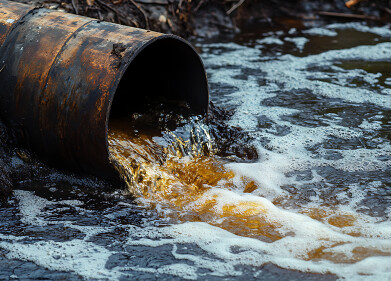Water/Wastewater
Is the Ocean Changing Colour?
Apr 07 2019
Significant swathes of the world’s oceans will change in colour by the end of the century, according to a new report from the Massachusetts Institute of Technology (MIT). Published in the journal Nature Communications, the study uses a sophisticated new computer modelling system to predict how changing temperatures may affect phytoplankton in the world’s seas and oceans and how this may have a knock-on effect on the colour of the water.
All about the chlorophyll
The way in which we perceive the colour of water depends entirely on the organisms within it and how they react with the sunlight. On their own, water molecules absorb almost all of the sun’s spectrum except for the blue part, which is reflected back outwards and creates the impression of a blue colour.
However, when organisms such as phytoplankton (which contain chlorophyll) are present in the water in large quantities, they can upset this process. Phytoplankton absorb the blue parts of the spectrum that ordinary water ignores and reflect some of the green, resulting in a more greenish hue to the water. It can also contribute to the proliferation of blue-green algae, which can be toxic and upset existing ecosystems.
Looking to the future
In order to arrive at their conclusions, the group used a pre-existing computer model that monitored the behaviour of phytoplankton and altered it to take into account the wavelengths of sunlight that would be absorbed by oceans depending upon the organisms residing within them. They then ran the simulation through until the end of this century, increasing the temperature by a maximum of 3°C by its end.
What they found suggested that those areas which are already blue in colour (such as warmer subtropical places) will become more intensely so, reflecting a drop-off in phytoplankton populations in the region. On the other hand, certain greener regions (such as the colder areas around the poles) may experience increased algal growth. However, other green parts of the ocean may turn bluer as the warming temperatures deter phytoplankton from inhabiting them.
Much to discover
While these changes in colour might be brought about by toxic elements present in the water or as a result of manmade climate change, the authors were quick to point out that there are other factors at play. Naturally-occurring meteorological phenomenon like El Niño or La Niña can also disrupt chlorophyll levels because of the changing nutrients in the water, thus resulting in a colour shift.
The authors stressed that these changes in colour could already be observable by as soon as 2055, but that there were too many variables in the equation to make predictions with any real conviction. “We’re using a computer simulation and need to make assumptions about how humans will or will not alter their CO2 consumption,” explained lead author Stephanie Dutkiewicz. “Also, there are still aspects of the phytoplankton that we don’t understand well enough – such as how ocean acidification will impact on the ecosystem level.”
Digital Edition
AET 28.4 Oct/Nov 2024
November 2024
Gas Detection - Go from lagging to leading: why investment in gas detection makes sense Air Monitoring - Swirl and vortex meters will aid green hydrogen production - Beyond the Stack: Emi...
View all digital editions
Events
Nov 27 2024 Istanbul, Turkey
H2O Accadueo International Water Exhibition
Nov 27 2024 Bari, Italy
Biogas Convention & Trade Fair 2024
Nov 27 2024 Hanover, Germany
Dec 02 2024 London, UK
Dec 03 2024 Dusseldorf, Germany










.jpg)








